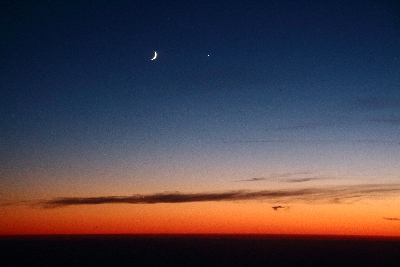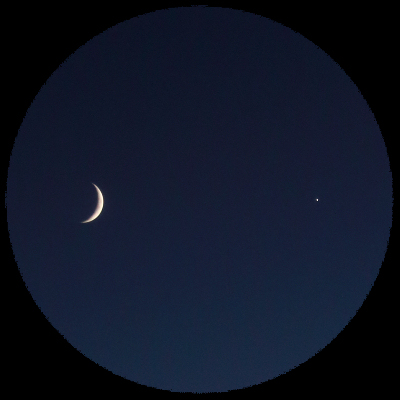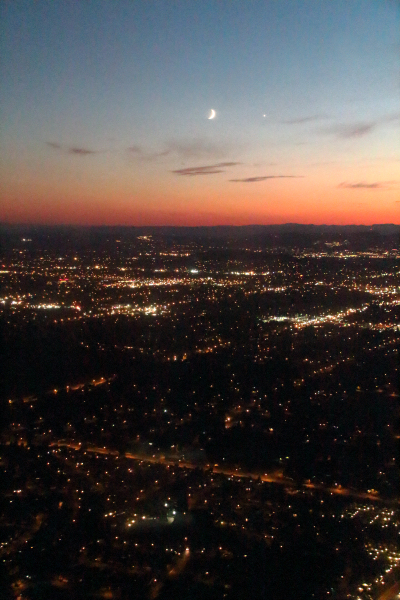
On a September 8 flight from Nampa, Idaho to Portland, I was treated to a conjunction between the crescent Moon ("Luna") and Venus. It was just after sunset, so from our turboprop altitude of about 28,000 feet, the sky started with a deep red-orange hue at the horizon, then quickly transformed to blue, deep blue, and finally blue-black.
On this trip, I happened to have my Canon image-stabilized binoculars with me. I count any planetary conjunction as a special treat if I can fit both of them into the same binocular view. That was true in this case, so I alternated between taking photos and just gazing at the celestial pair.

No photograph can convey what Venus looks like "live," especially through binoculars. It's a very, very bright but tiny point of light. In a picture, you can show it as a sharp white point or a fat white dot, but neither representation quite captures how it pierces the semi-dark sky long before other planets and stars appear.
I had plenty of time to observe the sunset conjunction because the western horizon never lost its orange hue for the whole trip. The person in the seat next to me was a pilot for Alaska Airlines, on his way to Portland to fly passengers to Hawaii. (His name was Bob, and he courteously kept his reading light off so I could shoot these photos.) Bob pointed out why the sunset was taking so long. At the equator, the circumference of the earth is 24,902 miles, thus for any point to make a round trip in a day it must travel 1,038 mph. We were flying near 45 degrees latitude, which only requires 734 mph to rotate through a day. If we could match that speed flying east to west, the sunset would stop in the sky. Our regional airline propeller plane was flying at about 345 mph. So, we were chasing the sun with a time-stretch of (734-345)/734 = 0.53. In other words, sunset time was going about half-speed for us.
When we reached Portland, our long sunset was still in progress as the city lights were flipping on throughout the city:

Sunset from an airplane over city lights is beautiful enough by itself, but on September 8 the presence of Luna and Venus in concert made it extra special.
